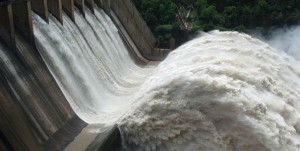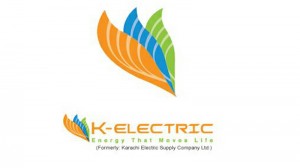NEPAL > Getting Into Nepalese Hydro
The fresh election held five months back has given a hope to all Nepalese people. It looks like the newly formed government is going to give us a new constitution within a year which was their promise. The country has suffered already. So it is the time for new leadership to prove that they can bring “Change”. It’s like “Now or Never” for all the political leaders. As such political parties are committed toward economic reforms in the country, with hydropower development at the top of the list.
There has been significant reform in Nepalese hydro. The World Bank has promised to assist in development of upto 3000 MW in the country (Billions to flow in for hydel if sector reformed. IFC to give US$6 billion for hydro projects.) A lot of positive interests have been shown from all around the world. (Budget will prioritize hydropower, agriculture, tourism Invest in Nepal for better return, NRB Governor tells investors Czech Republic eager to ink Economic Cooperation Agreement with Nepal, Bangladesh wants to buy 500 MW of electricity from Nepal. ). This post consists information on investment climate and procedures to get into Nepal’s hydro. Investors exploring Nepalese hydro industry may find this post useful.
1) GENERAL BACKGROUND
PPA Duration
Duration for PPA will be 30 years from date of commissioning of Project.
PPA Rates
The prevailing PPA rates for the Projects below 25 MW:-
Wet Seasons (8 months) : NRs. 4.80
Dry Seasons (4 months) : NRs. 8.40
*There is an escalation of 3 percent from the date of commercial operation for the first five years.
For Projects above 25MW
Determined through negotiation between the developers and NEA
Royalty
A hydropower company shall pay the royalty as follows to Government of Nepal (GoN) after the commencement of electricity generation.
a. Internal consumption project
1)From 1 MW to 10 MW :
Capacity Royalty (NRs. 100 per kW for the first 15 years)
Capacity Royalty (NRs. 1000 per kW for the last 15 years)
Energy Royalty (1.75% of the total revenue for the first 15 years)
Energy Royalty (10% of the total revenue for the first 15 years)
2) From 10 MW to 100 MW :
Capacity Royalty (NRs. 150 per kW for the first 15 years)
Capacity Royalty (NRs. 1200 per kW for the last 15 years)
Energy Royalty (1.85% of the total revenue for the first 15 years)
Energy Royalty (10% of the total revenue for the first 15 years)
3) Above 100 MW :
Capacity Royalty (NRs. 200 per kW for the first 15 years)
Capacity Royalty (NRs. 1500 per kW for the last 15 years)
Energy Royalty (2% of the total revenue for the first 15 years)
Energy Royalty (10% of the total revenue for the first 15 years)
b. Export-oriented hydropower project
1) Run-of-the-river :
Capacity Royalty (NRs. 400 per kW for the first 15 years)
Capacity Royalty (NRs. 1800 per kW for the last 15 years)
Energy Royalty (7.5% of the total revenue for the first 15 years)
Energy Royalty (12% of the total revenue for the first 15 years)
2) Storage Project : Capacity Royalty (NRs. 500 per kW for the first 15 years)
Capacity Royalty (NRs. 2000 per kW for the last 15 years)
Energy Royalty (10% of the total revenue for the first 15 years)
Energy Royalty (15% of the total revenue for the first 15 years)
Tax
As stipulated in Income tax act, the applicable corporate tax rate for enterprises undertaking electricity generation is 20 percent. In the case, the hydroelectricity project who starts construction work within Bhadra 7, 2071 B.S. (23 August 2014 A.D.) and commences its commercial production within Chaitra 2075 B.S (2019 A.D.), the income tax shall be exempted fully for ten years and after that fifty percent income tax shall be exempted up to next five years.
Corporate Tax : 20%
Dividend Tax : 5%
Capital Gain Tax : 10%
Custom
Custom duty is exempted on construction materials, machinery, equipment, tools and spare parts of hydropower project. Plant, machinery and equipment are entitled to one percent and to full exemption from VAT.
VAT
The applicable VAT in Nepal for all sectors is 13%. However, Machinery and Equipments required for the hydropower projects which are not produced in Nepal such as Machinery and their spare parts, penstock pipe or steel sheet to build penstock pipe are exempted from the VAT on project basis on the recommendation from the Department of Electricity Development (DoED). Such projects can also apply for zero rate VAT to Inland Revenue Department.
Availability of Raw Materials
The construction material like aggregate and boulder are locally available in the riverbeds depending upon basins. However, plant and machinery and penstock pipes have to be imported.
There is an abundance of workforce from highly skilled to unskilled within the country and the remuneration and wages of Nepalese workforce is considered to be one of the cheapest in the world resulting to lower the cost of project.
Return prospect of Hydropower Projects
While past performance doesn’t guarantee future, so far, the return on hydropower investments in Nepal has been very high. The higher performance and valuation of the listed hydropower companies in Nepal Stock Exchange (NEPSE) is one basis for understanding the return prospect of the investment in hydropower. For the detail analysis of listed hydropower companies, please visit the posts (SHORT FINANCIAL OF LISTED HYDROPOWER COMPANIES IN NEPAL, Arun Valley Hydropower Development Company, Limited Butwal Power Company Limited, Chilime Hydropower Company Limited)
2) FINDING PROJECTS
Department of Electricity Department (DoED), a government organization, issues the survey license in first come first basis. Almost all the projects that are feasible technically and economically have been acquired. So the best practical option is to either form a JV with the local developer or outright sale. There is no universal method for determining the rate of the project as it largely depends on the project itself, project status and negotiation skills. However, Super Six projects can be taken into account for the basis. Government of Nepal awarded six projects to Nepalese private developers through competitive bidding in 2010 for the first time which is known as “Super Six”
The following table shows the bid price (study level: feasibility) for super six projects.
Project Name : MAYA
Capacity : 5 MW
Annual Energy GWh : 40
Total Cost (NRs.) : 917,250,000
Offered Value (NRs.) : 30,500,000
Percentage : 3.3%
Project Name : SINGATI
Capacity : 6 MW
Annual Energy GWh : 49.38
Total Cost (NRs.) : 1,028,250,000
Offered Value (NRs.) : 32,700,000
Percentage : 3.2%
Project Name : MEWA
Capacity : 10 MW
Annual Energy GWh : 77.43
Total Cost (NRs.) : 1,485,000,000
Offered Value (NRs.) : 10,110,000
Percentage : 0.7%
Project Name : KHARE
Capacity : 14.7 MW
Annual Energy GWh : 90.43
Total Cost (NRs.) : 2,154,000,000
Offered Value (NRs.) : 50,700,000
Percentage : 2.4%
Project Name : SOLU
Capacity : 15 MW
Annual Energy GWh : 103.92
Total Cost (NRs.) : 1,264,500,000
Offered Value (NRs.) : 66,000,000
Percentage : 5.2%
Project Name : LOWER SOLU
Capacity : 40 MW
Annual Energy GWh : 103.92
Total Cost (NRs.) : 3,383,250,000
Offered Value (NRs.) : 260,000,000
Percentage : 7.7%
General trend is such that, if the developer has to acquire license from the private owner, a nominal fee in the range of 2% of the Project Cost has to be paid in the form of cash and equity depending on developers. Typically, the cash refund is paid to the developer for holding the license and study undertaken for that project. And the balance is converted into equity.
Remarks
For those who wish to get into Nepal’s hydro should focus on PPA concluded or those projects that have signed grid connection agreement. The Nepal Electricity Authority (NEA), the only power purchaser in the country, will not sign PPA with new projects stating that electricity will be wasted during the rainy season after five years. However, NEA is willing to sign PPA with those with whom they have signed the power connection agreement. Please refer this post (NEA not to sign PPA with new projects).
3) IDEAL PROJECT
Hydropower projects are site specific. Ideal hydropower project would be those projects that have necessary infrastructure like access road and short transmission line. Likewise, Plant Load Factor (PLF) is also important. The rule of thumb for PLF is “Higher the better”. At present, project above 60 percent PLF is considered as a good project. Apart from these, the existing PPA rates in Nepal support projects that are not more than NRs 160 million per MW (the lower the better).
4) FINANCIAL INSTRUMENTS WITHIN THE COUNTRY
The financial environment for hydropower construction is improving. IFC is in the process to issue local bond worth of NRs. 50 billion in installment basis (IFC permitted to issue Rs 50 billion (US$ 500 million) in local currency bonds) The whole amount will be floated by 2018. This will help investors to some extent. Another government company called Hydropower Investment Development Company Limited (HIDCL) is set up with a capital of NRs. 10 billion (HIDCL to issue public shares worth Rs 2 billion). The main purpose is to invest in hydropower companies both in the form equity (minority partner) and debt. Likewise, Central Bank of Nepal has given directives to domestic bank to maintain at least 12 percent of the total loan portfolio in energy sector. Previously, domestic bank’s portfolio was less than 2 percent.
In addition, Initial Public Offerings (IPOs) can be used to raise the capital. Up to 49 percent of the total equity can be raised through IPOs during construction. And there is a lot of interest from general public when it comes to the IPOs of hydropower. The recent example of Ridi Khola Hydropower Development Company can be taken as instance to show the charm in Hydropower companies. It was oversubscribed by 92 times. In amount, the company asked for NRs. 117,000,000 at par value where it managed to collect NRs. 11,100,000,000. Please refer (UPCOMING HYDROPOWER IPO IN NEPAL AND LESSON LEARNED FROM THE RECENT IPOs) for further details.
5) EXIT STRATEGY
In the context of Nepal, there is a lock-in period for promoters. For Banks and Financial Institution, the promoter lock-in period will be 5 years from the date of commercial operation. However, even after 5 years promoters cannot sell their shares to public. Promoter’s shares have to be sold to existing promoters shareholders and normally the price will be roughly half of the public shares. This is the case for financial institutions in Nepal. On the other hand, the lock-in period for hydropower companies in Nepal will be 3 years from the date of listing in Stock Exchange. Additionally, promoter shareholders can sell their shares to the public in the current market price as listed in Nepal Stock Exchange (NEPSE). This is the privilege Hydropower company enjoys in Nepal, helping investors exit if they want to.
For earlier, introductory post on hydro power, please see here.





